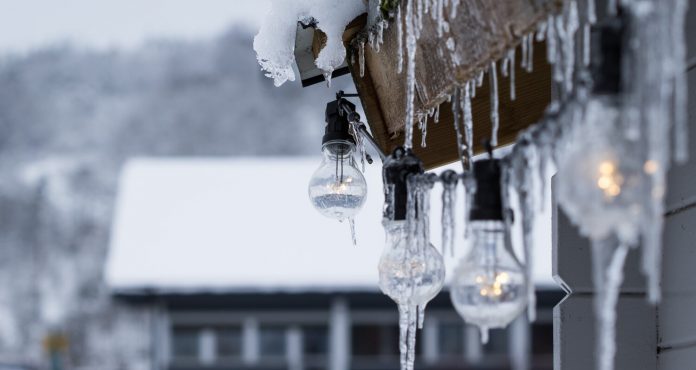If you live in cooler climes, chances are you spend a lot of time indoors during winter. Come December, the windows close, the heaters blast, and air flow grinds to a halt. And while closing off your home to the elements can lower your energy costs and keep you cozy, it can also lead to an increasingly dirty environment. (Outdoor air tends to be less polluted than indoor air, after all, depending on your location.) So when you’re thinking of winter-proofing your home, take a more balanced approach with these tips from toxicologist Rhea Mehta, Ph.D. Moral of the story? Keep the warm air inside, but make sure it’s clean.
1. Caulk any visible leaks with a green alternative.
Caulking is a quick way to prevent air leaks around windows and doors in the winter. But typical caulking sealants are made of silicone, polyurethane, or polysulfide—which can off-gas volatile organic compounds (VOCs) that can cause headaches, fatigue, brain fog, and irritability when they linger in the air for too long. For this reason, Mehta recommends using a low-VOC, water-based option such as AFM SafeCoat Caulking Compound.
On the next cold, windy day, walk through your home and take note of any cracks where you feel cool air coming in (paying special attention to ridges where your windows and door frames meet your walls). Then, wipe down these surfaces so they are clean and run your caulking material alongside them at a 45-degree angle. The U.S. Department of Energy recommends waiting to do so until the outdoor weather is right: You’ll want to make sure it’s a dry, low-humidity day with a temperature above 45°F so the caulk can properly set.
2. Install blackout curtains.
In addition to keeping your home nice and dark during sunny early mornings, thick blackout curtains can also trap heat inside. Again, avoid VOCs by opting for non-vinyl curtain options.
3. Consider a smart thermostat.
“Installing a programmable thermostat is one of the best ways to practice energy efficiency, as you can program the thermostat to drop the household temperature while the house is empty or while people are sleeping,” Mehta explains. She says this is a better option that something like an unvented combustion space heater, which can release carbon monoxide into the air if not properly installed.
4. Check in with your furnace filters.
Dirty, dusty furnace filters don’t work as well and they can restrict the air flow of your home. Mehta recommends washable, permanent filter options instead since they’re less wasteful and easier to clean year after year.
5. Make sure your indoor air isn’t dirty or dry.
Winter is the time to be a stickler about indoor air quality. First, snag a portable humidity meter and make sure that your air is humid enough: Anything less than 40% humidity could cause respiratory irritation. If your space is too dry, put a humidifier in high-traffic areas like the living room and bedroom. (Honeywell’s humidifier is a good budget-friendly option, while Dyson’s AM10 is great if you’re willing to splurge.)
And to stave off dirty air during months where it’s too cold to open windows, keep up with a thorough cleaning and dusting routine, remove shoes and boots at the door, and run the exhaust hood every time you cook. If you live in a super-polluted city or have a respiratory issue, you might want to consider investing in a HEPA air filter to be safe.
6. Ditch chemical-heavy products.
Make sure you’re not inadvertently adding toxins back into your air with your household products by switching over to more natural cleaners, beauty essentials, and air fresheners.
7. Get your most important areas checked out by the pros.
Mehta says the most important areas to winter-proof at home are the doorways, windows, HVAC, and plumbing systems. If you suspect that these are leaking air, consider calling in a professional insulator. Oh, and when you do, ask about cellulose insulation—it’s inexpensive and made from recycled paper products.





























